Rochester Sweeps Festival May Day 2006
by Esmerelda Weatherwax (May 2006)
The family and I have just returned from celebrating May Day (now a public holiday in the UK) at Rochester Sweeps Festival which is said to be the largest festival of Morris dancing anywhere. If you want to know more about Morris dancing don’t ask me, I can’t dance, but the websites here and here will tell you more than you ever needed to know.
May Day was originally the only real holiday of the year for chimney sweeps and the boys who cleaned the chimneys. It was a cruel way to clean chimneys which is why it was discouraged and eventually outlawed by The Climbing Boys Act of 1868. The festival died out but was revived by a Morris dance enthusiast about 27 years ago.
It runs over 3 days, Saturday, Sunday and the May Day Bank Holiday Monday, which this year actually was May Day. Unfortunately I didn’t see a single maypole but with so much going on I missed quite a lot.

For three days there are folk concerts in the pubs and halls of Rochester, Morris dancing up and down the High Street and greens, music workshops and suchlike culminating in the finale parade on Monday afternoon.
Sunday 30 April 2006
We arrived on Sunday afternoon and this is what we saw first. The black faces are from a tradition called molly dancing. Some people are a little uncomfortable with this because they associate it with the black and white minstrels of the 19th century. This history is somewhat different. Morris Dancing was a means of raising money when times were hard. Beggars could be arrested. The black paint, a fixed expression and women’s clothing (these days women also wear men’s clothing as can be seen here) were a disguise, and rude comments about the village landowner could be made in relative safety. With modern make up other colours are now seen. Blue is popular, and I have seen yellow and black stripes. The Maenads, the Wild Women of Kent, paint their faces with green spiders webs.

They sang traditional songs, some about the American Revolution, and some of their own compositions. Not having to drive again it was a good chance to settle down with a couple of glasses of Old Speckled hen and take advantage of some sunshine for once.
Note the handy stands for the beer.

We moved on down the High Street stopping every so often as a Morris Side were performing in the road. Musicians and dancers were wandering up and down. Music was coming from everywhere. These are Knots of May, Bows and Belles of Colchester and Old Star Morris of East Sussex

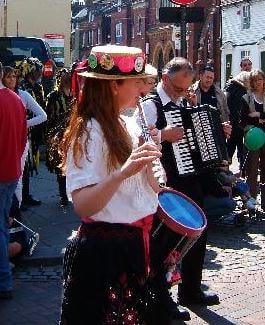
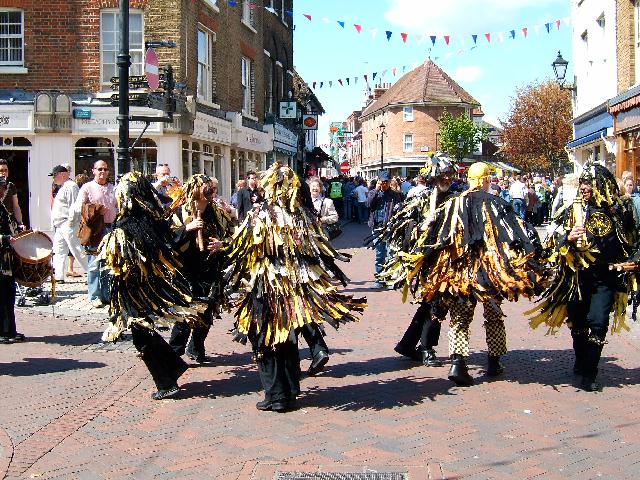
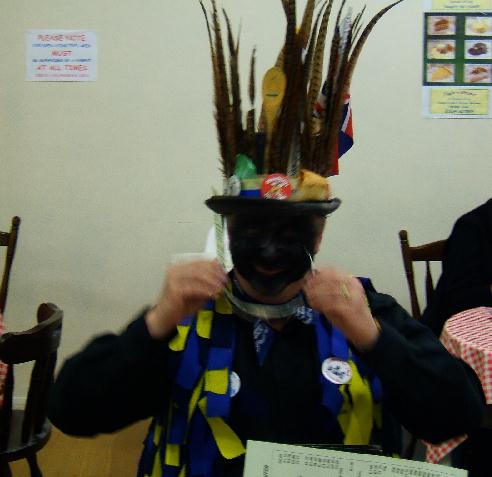
Then we went into Fagin’s Café for a meal. Where we were not alone
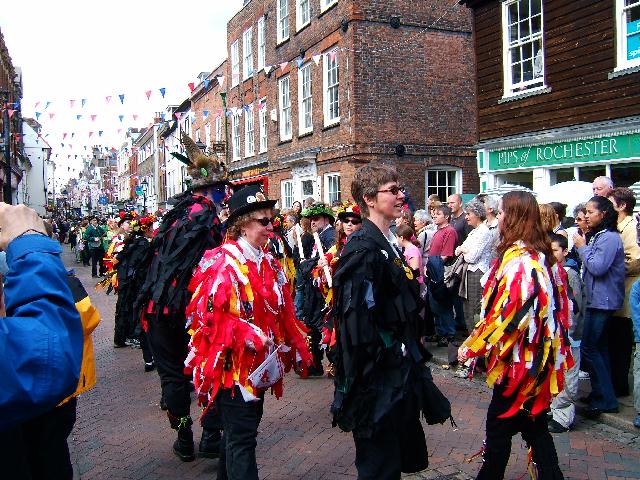
Sides come from all over England and beyond. This is Rant and Raven from Anchorage Alaska

Eventually we reached the Medway River and the medieval castle and Cathedral. The Cathedral is Norman started in 1080. The Castle was also founded by the Normans on what were the Roman city walls. On the other bank of the Medway are the towns of Strood and Chatham, site of the Royal Naval Dockyard.
The Medway towns have a thriving Asian community and there were quite a lot of Sikh and Indian families enjoying the music. Not so surprising when you consider that Bhangra and some Morris have their roots in agricultural farming communities. Dances based on the movements of reaping and hoeing would have much in common. North West Morris developed in the Lancashire mill towns, hence the clogs and ribboned bobbins.
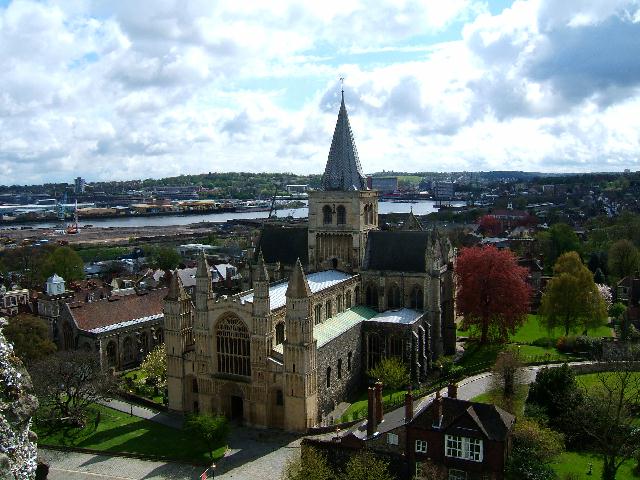
The Castle as seen from the Cathedral and the Cathedral as seen from the castle battlements.
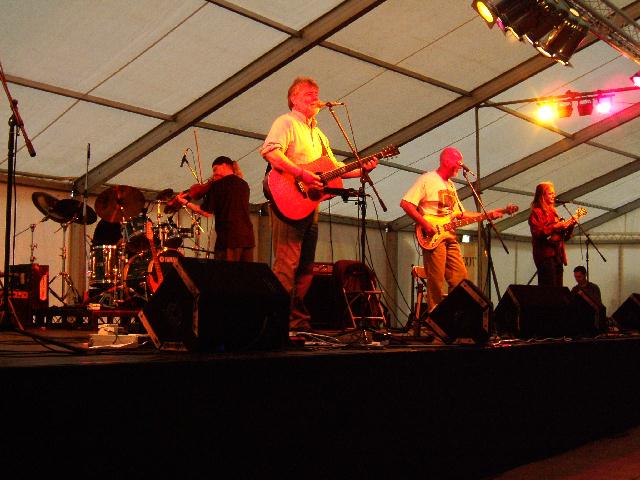 That evening, in the marquee on the Castle Green was, for us, the main event of the weekend, Fairport Convention, live. We were unable to come on Saturday to see Lazarus, the new band formed by Fairport’s former fiddle player and great friend Dave Swarbrick. He is so well recovered from a lung transplant two years ago that he is now able to gig again, which is great news. Fairport played a selection of their most popular songs from their nearly 40 year history, including Meet on the Ledge, Crazy Man Michael and Matty Groves.
That evening, in the marquee on the Castle Green was, for us, the main event of the weekend, Fairport Convention, live. We were unable to come on Saturday to see Lazarus, the new band formed by Fairport’s former fiddle player and great friend Dave Swarbrick. He is so well recovered from a lung transplant two years ago that he is now able to gig again, which is great news. Fairport played a selection of their most popular songs from their nearly 40 year history, including Meet on the Ledge, Crazy Man Michael and Matty Groves.
Monday 1st May 2006.
Monday morning started, although we were not there, at dawn on nearby Bluebell Hill when the dancers woke Jack-in-the-Green and brought him into Rochester. The Alaskans of Rant and Raven remarked on the cold, to the surprise of the other sides, or so I was told. Back in Rochester we woke to a full English breakfast and rain, but it soon brightened up.
Outside the cathedral the Greenwich Morris men were dancing in the Cotswold Morris style. As its name suggests this style originated in the Cotswold Hills. 40 years ago this was the only style that was ever seen in Southern England and the ribbons bells and handkerchiefs attracted a certain amount of derision.
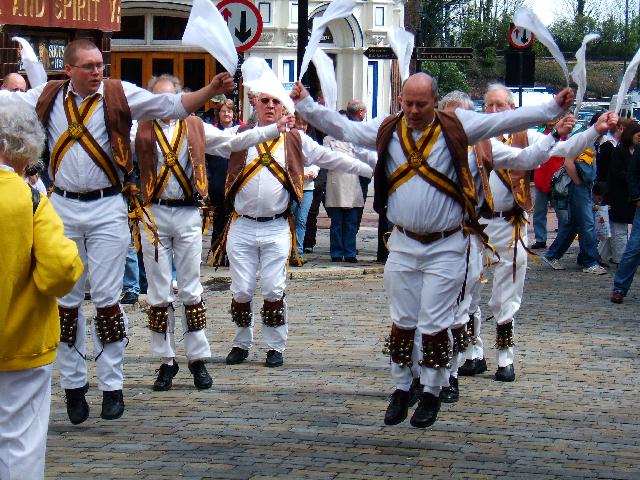 Cotswold style from Greenwich
Cotswold style from Greenwich
Which is why when the interest in Morris and folk music generally grew, so did the interest in the North West style, danced in clogs, Border (that’s the border with Wales) or Rapper danced with stout sticks, which proved very handy for repelling hecklers, Blackface or Molly and “other”.
“Other” can be interesting. There is a Pagan element. I know of a side of heavy metal biker Morrismen, who dance in leathers with spanners instead of sticks. They were elsewhere this weekend. There are also several Goth sides, such as The Witchmen from Northamptonshire.
And these, Wolfs Head and Vixen, who are dancing Rochester Cobble, a local tale of the press gang.


And this is Phoenix Morris. They are not goths, of course, although I can’t be certain about the dogs.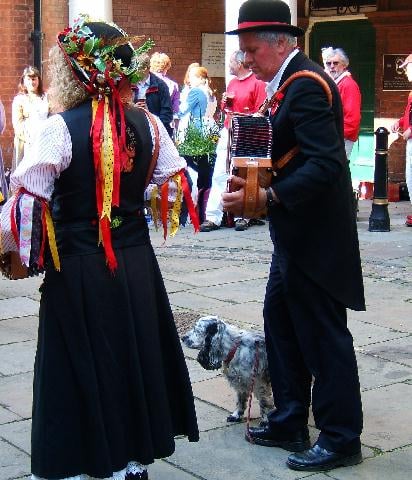
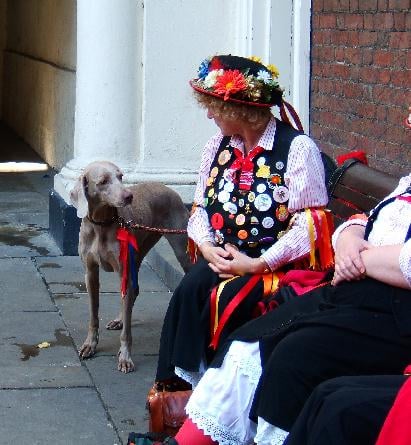
I know at least one accordion player is Jewish. Perhaps one day soon we might have Bhangra Morris.
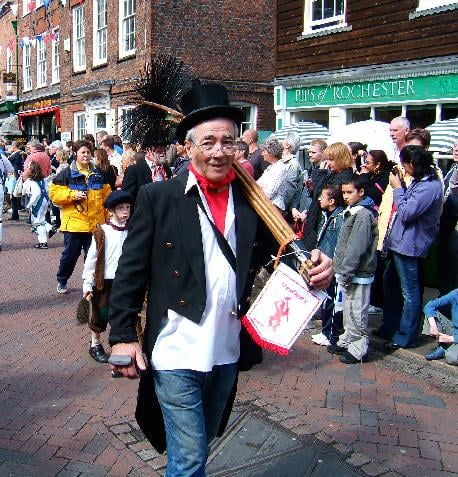
The finale was a parade through town with the Sweeps. The climbing boys were represented by very well fed and healthy looking Cubs, Brownies and Beavers, wearing their granddads caps and smutty faces.
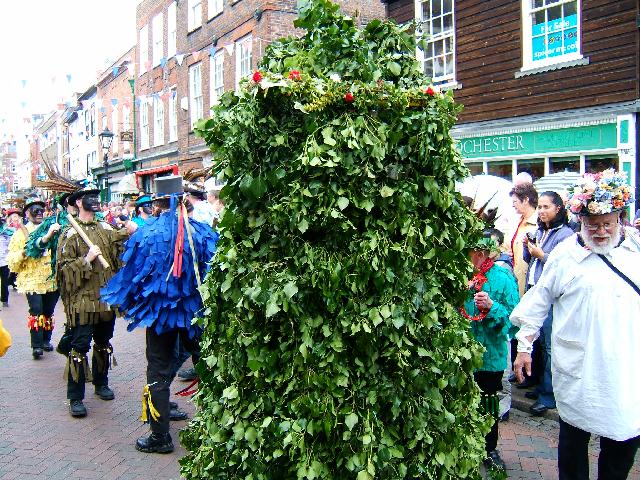
Motley Morris of Rochester are the custodians of Jack-in-the-Green, symbol of spring and new life.
We at the New English Review are said to be a delightful motley. These are Motley Morris.
Delightful rappers in multicoloured tatters

A smashing weekend!
Photos by Mustrum Ridcully
- Like
- Digg
- Del
- Tumblr
- VKontakte
- Buffer
- Love This
- Odnoklassniki
- Meneame
- Blogger
- Amazon
- Yahoo Mail
- Gmail
- AOL
- Newsvine
- HackerNews
- Evernote
- MySpace
- Mail.ru
- Viadeo
- Line
- Comments
- Yummly
- SMS
- Viber
- Telegram
- Subscribe
- Skype
- Facebook Messenger
- Kakao
- LiveJournal
- Yammer
- Edgar
- Fintel
- Mix
- Instapaper
- Copy Link






